
You're not alone if you've ever felt stuck in a skinny frame and dreamed of packing on solid muscle.
I was once a 100-pound guy, struggling to gain size and muscle.
Today, I weigh around 200 pounds and can press more than 120 pounds in each hand.
My transformation is a testament to the power of hard work, determination, and informed fitness practices.
But it's not just about me; it's about you and how you can achieve similar results.
So, let's dive into my story and the strategies that can help you transform your physique.
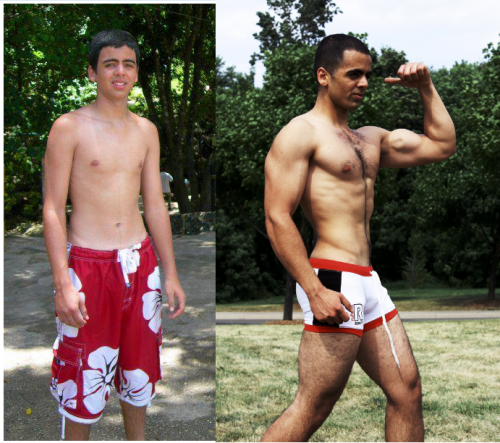
Welcome to a visual journey of transformation that spans nearly two decades.
Below, you'll see snapshots of me from various years, starting from 2005.
These 'Before' images capture the essence of a young man eager to change but still finding his way in the fitness world.
On your right, behold the 'After'—a testament to years of sweat, discipline, and relentless pursuit of growth.
Each pair of photos tells a story of challenges overcome and milestones achieved.
As you scroll through, you'll see a physical transformation and the evolution of a mindset geared towards constant improvement.

The starting point.
I was skinny, and the road ahead seemed long and uncertain.

I had made progress after three years, but it was slow.
I hadn't yet honed in on the importance of compound lifts or the right training program.
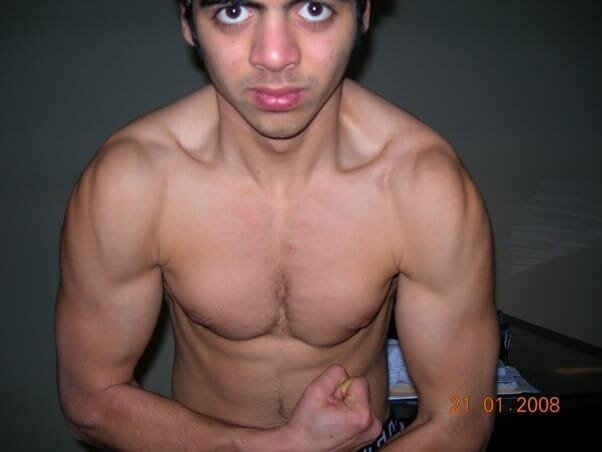
This was a pivotal year.
I found my footing in programming, and the results were noticeable.
The weight difference between 2005 and 2009 was significant, but I believe it could have been achieved more quickly with my current knowledge.
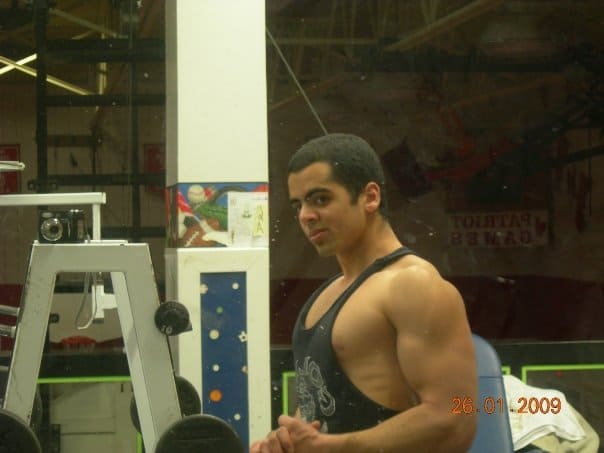
I was looking more developed here and in excellent cardiovascular shape here.

This year was a high point.
I was in the best shape of my life, both big and lean.
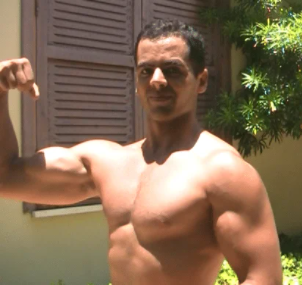
A low point in my journey.
I gained a considerable amount of fat and was probably in the worst shape I had been in since my skinny days.

Fast forward to today, and I'm looking big and working on shedding the remaining fat for a more sculpted physique.

Life happens, and setbacks are a part of the journey.
The key is to learn from them and bounce back stronger.
The pictures may show the physical transformation, but the mental and emotional growth has been equally transformative.
In my journey from skinny to muscular, I've tried many techniques, diets, and exercise regimens.
Some worked wonders, while others fell flat.
Here's a breakdown of what fueled my transformation and what didn't make the cut.
Compound lifts like squats, deadlifts, and bench presses were the bedrock of my muscle-building journey.
These multi-joint exercises simultaneously engage several muscle groups, offering a more efficient workout.
I prioritized these lifts, especially at the beginning of my workouts, to capitalize on my peak energy levels.
The pre-exhaust method became a staple in my routine.
By performing an isolation exercise like dumbbell flies before a compound lift like bench press, I could fatigue the targeted muscle group.
This technique helped me establish a solid mind-to-muscle connection and maximize the effectiveness of subsequent compound lifts.
Harnessing my emotions and channeling them into my workouts was transformative.
This mental strategy allowed me to push beyond my physical limits, instilling a discipline and drive that set the stage for consistent growth.
Recovery was non-negotiable. I incorporated deload weeks every 6-12 weeks to allow my muscles to recover fully.
This approach prevented injuries and set the stage for subsequent growth spurts.
A thorough warm-up was always part of my routine.
This practice prepared my body for the intense lifting ahead and was instrumental in avoiding injuries.
Over a decade of training, and not a single significant injury.
I discovered the importance of adequate rest periods between sets, especially for compound lifts.
Extending my rest periods to 2-3 minutes allowed for better strength recovery, making each set more effective.
Creatine supplementation was a significant catalyst in my muscle-building journey.
It helped me break through plateaus and added that extra oomph to my workouts.
Staying hydrated was crucial to maximize the benefits of creatine.
The rest-pause method was among the techniques that profoundly impacted my gains.
It kept my workouts intense and engaging, leading to well-rounded muscle development.
Extreme stretching was another technique that proved invaluable.
It not only enhanced my flexibility but also accelerated muscle growth and recovery.
While my journey has been largely successful, it's important to acknowledge the strategies that didn't contribute much to my muscle-building goals.
Isolation exercises, for example, were useful for targeting specific muscles but didn't offer the comprehensive muscle engagement that compound lifts did.
They served well as finishers or warm-up exercises but were not the cornerstone of my gains.
As for supplements, aside from creatine and pre-workouts, most others like testosterone boosters and growth hormone supplements, proved to be ineffective.
They might have offered some minor benefits in terms of energy or well-being, but they didn't significantly impact my muscle growth or strength levels.
Isolation exercises had their place but were not the main drivers of my muscle gains.
They were effective as finishers or for muscle engagement but didn't contribute significantly to overall muscle growth.

Beyond creatine and pre-workouts, most other supplements didn't yield significant results.
For instance, testosterone boosters and growth hormone supplements were more hype than substance for me.
Bodybuilding programs have undergone significant changes over the years, influenced by various factors, including professional bodybuilders, scientific research, and the advent of performance-enhancing drugs.
Let's delve into how these elements have shaped the bodybuilding landscape and what it means for individuals like me searching for muscle growth.
I was a staunch advocate of the push/pull/legs routine for years.
I had adopted this approach early on, influenced by the muscle magazines and professional bodybuilders who seemed to swear by it.
And to be fair, it wasn't that this routine didn't work; I did see results.
My muscles grew, and my strength increased.
However, the progress was slow, and I couldn't shake off the feeling that something was missing.
About three years ago, I stumbled upon some compelling research that advocated for full-body workouts.
The science was hard to ignore: muscle-protein synthesis remains elevated for about 48 hours post-workout, suggesting that hitting each muscle group more frequently could lead to more efficient muscle growth.
Intrigued and a bit skeptical, I decided to make the switch.
The transition wasn't easy. I had to reprogram my mindset and my muscle memory.
But the results were astounding once I got into the groove.
My muscles felt perpetually pumped, and I noticed a significant uptick in my strength.
I was growing, and the progress was rapid and consistent this time.
Looking back, I realize that while the push/pull/legs routine did yield results, it wasn't the most efficient path for me.
I responded well, but had I switched to full-body workouts earlier, I'm convinced I would have achieved faster and more sustainable muscle growth.
It's a lesson learned and a testament to the importance of staying updated with scientific research and being willing to adapt.
Bodybuilding programs are often popularized by professional bodybuilders who are genetically blessed and benefit from pharmaceutical enhancements.
These individuals have the luxury of bending traditional training rules, operating under different physiological conditions.
This has led to the widespread adoption of push/pull/legs split routines, where different muscle groups are targeted on specific days of the week.
However, this approach doesn't necessarily yield the best results for the average person.
The push/pull/legs routine typically divides the week into three main workout days:
While this may sound logical, it's not the most effective way to stimulate muscle growth.
When a muscle is worked, muscle-protein synthesis is elevated for about 48 hours.
If you train your chest on Monday, it will grow until Wednesday and then stop until the next chest workout.
So, why were these routines only stimulating muscle growth once a week?
A pivotal study conducted in 2000 by McLester compared the effects of full-body workouts to push/pull/legs splits.
Both groups performed the same exercises, sets, and reps, but the full-body workout group experienced an 8% increase in muscle mass, compared to just a 1% increase in the split routine group.
This study was a game-changer, suggesting that training each muscle group three times a week could lead to more consistent and significant muscle growth.
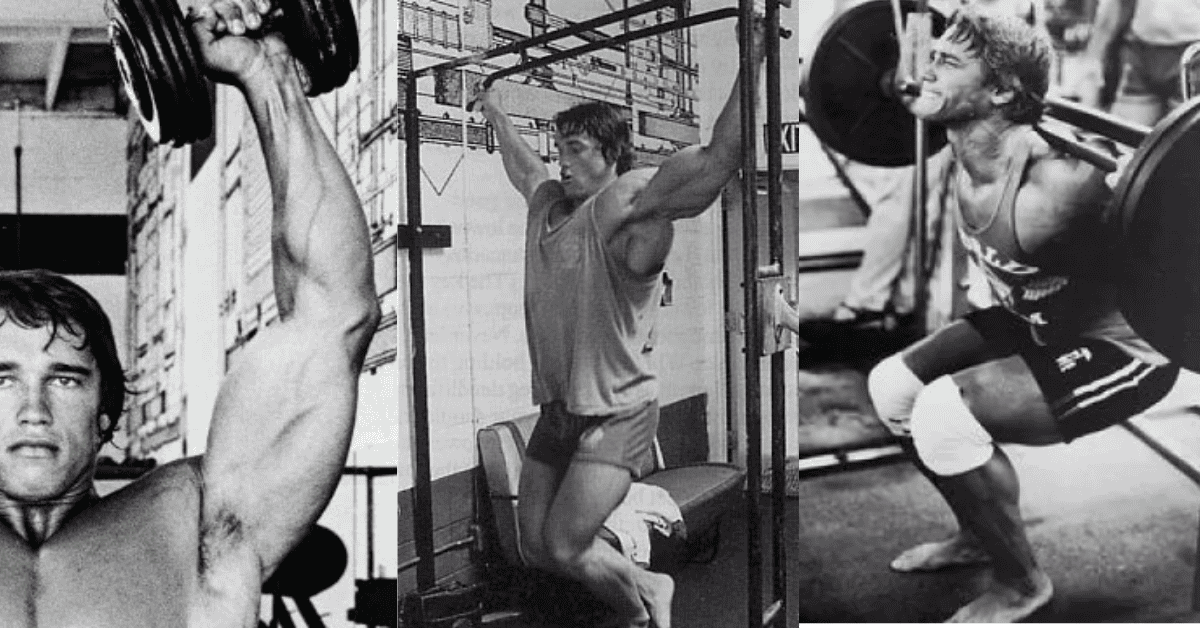
Interestingly, full-body workout routines were the norm in the 1940s and 1950s, embraced by top bodybuilders, strongmen, and athletes.
The shift towards push/pull/legs splits occurred in the 1960s with the introduction of steroids.
These drugs kept the body in a constant state of muscle-protein synthesis, making less frequent stimulation sufficient for growth.
Additionally, as these bodybuilders had larger muscles requiring longer recovery times, the split routines allowed extended rest periods.
Recent research has further validated the benefits of full-body workouts, although the differences in muscle growth are not as extreme as initially thought.
The key takeaway is that full-body workouts are generally more effective for muscle growth, especially for those who are not professional bodybuilders.
Armed with this knowledge, I transitioned from a push/pull/legs routine to a full-body hypertrophy routine.
The results were remarkable, aligning with the scientific evidence that advocates for more frequent muscle stimulation for optimal growth.
The journey to muscle gain isn't just about lifting weights; it's also about what fuels those workouts.
My diet has played a crucial role in my fitness journey, helping me build muscle mass while keeping unnecessary fat at bay.
Here's a deep dive into my dietary habits, which have evolved over the years but remain rooted in Mediterranean traditions.
Being of Arab ethnicity, my diet naturally leaned towards Mediterranean cuisine.
This wasn't just a dietary choice but a part of my culture and upbringing.
My mom was the culinary genius in our household, whipping up dishes rich in olive oil, herbs, and protein sources like chicken and beef.
Her cooking was so good that even my friends would rave about it.
The Mediterranean diet is known for its health benefits, including heart health and weight management, which made it a perfect fit for my muscle-building journey.
One of my luxuries was that my mom would make enough food for more than one meal.
This meant I didn't worry about organizing my dinners or meal prepping.
The convenience allowed me to focus more on my workouts and less on what I would eat next.
This was especially beneficial during my school years, where juggling academics and fitness was a daily challenge.
While breakfast and dinner were my day's main meals, I occasionally had a light lunch between 2-4 pm.
This would typically be something small and protein-rich, like a can of sardines.
When I started fasting, I found it easier to skip lunch altogether and not eat until around 3-5 pm.
This shift in eating patterns allowed me to maintain my energy levels while giving my digestive system a break.
I ate a lot in my early training years—sometimes too much.
I noticed I was growing a belly along with my muscles.
This was a wake-up call. I started to be more mindful of my portions, aiming to eat just enough to feel full but not overly stuffed.
This helped me keep unnecessary fat gain at bay.
It's a balancing act that took some time to master but was crucial for my overall progress.
For the first five years of my training journey, breakfast was non-negotiable.
It was usually a combination of eggs, oatmeal, and an apple.
The eggs provided slow-digesting protein and essential nutrients, the oatmeal offered slow-releasing carbs, and the apple helped slow digestion.
This trio set me up for sustained energy levels, especially for my lunchtime workouts at school.
Breakfast became a ritual that set the tone for the rest of the day.
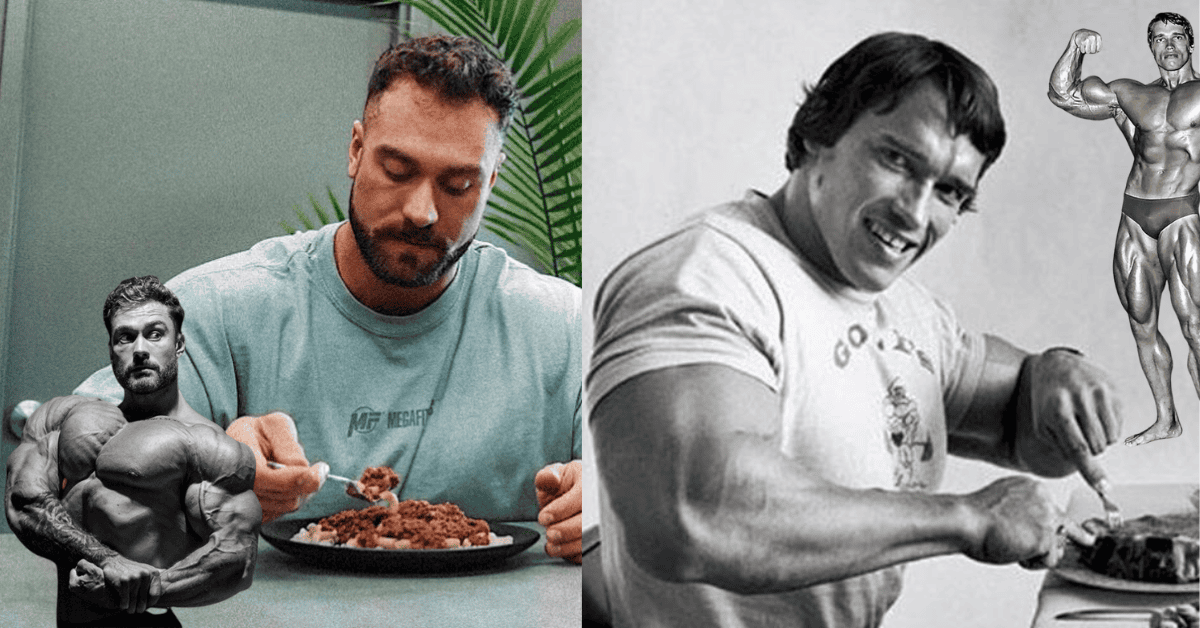
These days, my approach to diet has evolved.
I often find myself working out in a fasted state.
My first meal could be a protein shake with oatmeal or a pre-workout supplement, depending on my feelings.
This flexibility has come from years of understanding my body and its needs.
It's a more intuitive approach that aligns with my current lifestyle and fitness goals.
My diet has never been set in stone.
If I noticed I was gaining too much fat, I'd cut back on junk food and reassess my eating habits.
While I never counted calories—finding it too tedious and unsustainable—I always made adjustments based on the results I saw.
This adaptability has been key in maintaining a physique I'm proud of.
While the basics got me far, my willingness to experiment catapulted my gains into another stratosphere.
I wasn't content with following the norm; I wanted to go above and beyond.
And that's precisely what I did, especially regarding my biceps.
They're not your average biceps; they're fuller, bigger, and a testament to my experimental approach.
I didn't stick to a single exercise method but mixed it up.
From rest-pause sets to varying my rep ranges between 3 to 15, I kept my muscles guessing.
Drop sets and supersets became a regular part of my routine.
This variety made my workouts more engaging and led to more comprehensive muscle development.
Supplements played a significant role in my transformation.
Creatine, in particular, had a massive impact.
It helped me push through plateaus and gave me an edge in my workouts.
But it wasn't just about popping a pill; hydration was crucial.
I made sure to drink lots of water to maximize the effects of the supplements and keep my body functioning at its peak.
Pre-workouts were a game-changer for me.
They made me feel like my life depended on each workout.
The focus and energy they provided allowed me to push myself harder and smarter.
Combined with well-planned programming and adequate recovery, I saw gains like never before.
Even today, I continue to evolve. I've had my phases of being out of shape, but I always find my way back.
Consistency has been my secret weapon.
I've learned to adapt, to get back on track, and to keep pushing towards becoming the next best version of myself.
My journey from skinny to muscular wasn't easy, but it was worth every drop of sweat and every moment of struggle.
And if I can do it, so can you.
With the right approach, a willingness to experiment, and a commitment to consistency, you can transform your body and achieve your fitness goals.
So what are you waiting for?
It's your time to shine.
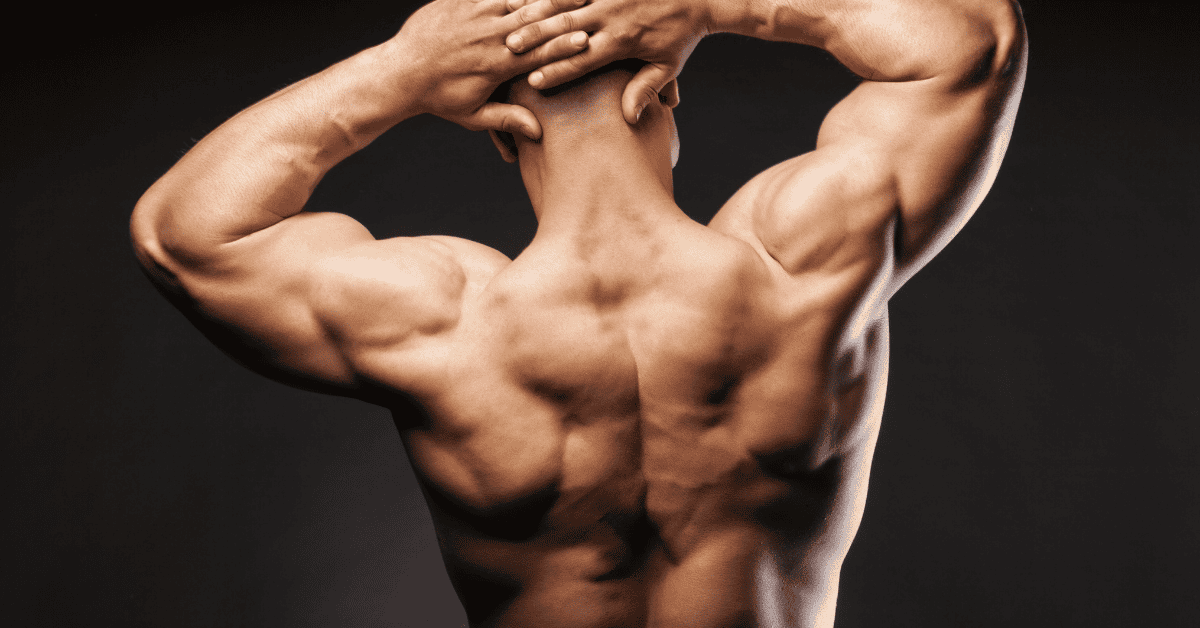
The physical aspect of transformation often overshadows the mental journey, but the mind is your most powerful tool.
The control center can either propel you forward or hold you back.
The key is to harness every emotion, every reason, and every imaginable scenario to push yourself to the brink of your limits—not all the time, but most of the time.
This is how you develop the focus, discipline, and mindset needed for consistent and effective workouts.
When life throws curveballs your way—stress, anger, or any other emotional upheaval—channel that energy into your workouts.
Push yourself to the point where you feel there's nothing more you could have given.
This is not just about physical exhaustion; it's about emotional catharsis.
It's about turning potentially destructive emotions into constructive action.
Here's the thing: you have a fully enabled body and mind.
Not utilizing them to their maximum capacity is a disservice to yourself.
You'll never truly know your capabilities unless you push those boundaries.
And the benefits of this mindset spill over into other aspects of life.
You won't just look better; you'll also achieve a mental stability that's hard to describe.
It's not happiness per se; it's a sense of pride and accomplishment that enriches your life.
Whether your motivation is to impress someone special or to become a better version of yourself post-breakup, your emotional state can be a powerful fuel.
Emotions that might otherwise be destructive find a healthy outlet, transforming you into a stronger, more resilient individual.
Even on days when the last thing I wanted to do was hit the gym, I went anyway.
And every single time, I ended up being more satisfied that I did.
Skipping the gym would have been the easy choice, but it would have left me feeling unfulfilled and regretful.
The truth is, I always feel at my best, at my peak, when I exercise.
It's like flipping a switch; the moment I start working out, everything else fades away, and I'm left with a sense of accomplishment that no other activity provides.
This isn't just about physical gains or maintaining a routine; it's about mental well-being.
Exercise serves as a reset button for my mind.
Regardless of how I felt before walking into the gym, I always walk out mentally and physically rejuvenated.
It's a non-negotiable aspect of my life, a cornerstone that keeps me grounded.
Watching bodybuilding videos on YouTube became my weekly ritual, clocking in at least a few hours each week.
This was a time when Ronnie Coleman was at his peak, and his videos were nothing short of inspirational.
However, it was the Golden Era bodybuilders who captivated me the most.
Legends like Arnold Schwarzenegger, Frank Zane, and Serge Nubret had a unique aesthetic that resonated with me.
Their physiques were not just massive; they were artful, balanced, and aesthetic.
The Golden Era bodybuilders had a different approach to training and diet, focusing more on the art of bodybuilding rather than just sheer size.
This resonated with me deeply and influenced my training methods.
I found myself incorporating their philosophies, from focusing on compound lifts to the importance of diet and aesthetics.
The Golden Era wasn't just a period in bodybuilding history for me; it was a source of endless inspiration and a guiding light for my journey.
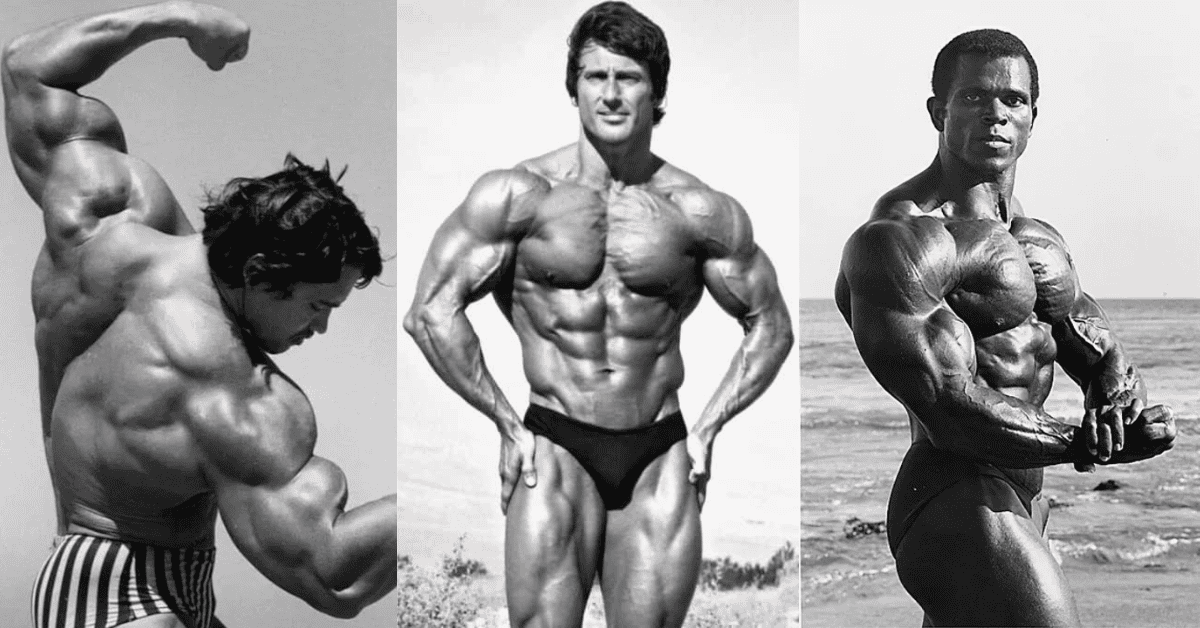
How long did it take for you to see significant results in your fitness journey?
It took me about four years to see significant results. However, the pace could have been faster if I had focused on compound lifts and proper training programs earlier.
What role did diet play in your transformation?
Diet played a crucial role. I mostly followed a Mediterranean diet, rich in protein and healthy fats. I also practiced moderation with junk food and adjusted my eating habits based on my fitness goals.
Did you use any supplements?
Yes, I used creatine and pre-workout supplements. Creatine helped me push through plateaus, and pre-workouts gave me the focus and energy needed for intense workouts.
How did you manage to stay injury-free?
I always prioritized warming up before workouts and took rest periods seriously. This helped me avoid injuries throughout my 12+ years of training.
What didn't work for you?
Isolation exercises and random supplements other than creatine and pre-workouts didn't contribute much to my gains.
How did you handle mental and emotional challenges?
I channeled my emotions into my workouts. This helped me push through physical barriers and improved my mental well-being.
Did you ever hit a plateau? How did you overcome it?
Yes, I hit plateaus. I overcame them by experimenting with different exercise methods and incorporating supplements like creatine.
How often did you work out each week?
I generally worked out three times weekly, focusing on full-body hypertrophy routines for maximum muscle growth.
Did you ever take breaks or deload weeks?
Yes, I took a week to deload after 6-12 weeks of hard training to allow my muscles to recover fully.
What's your advice for someone starting their fitness journey?
Focus on compound lifts, proper diet, and consistency. Don't be afraid to experiment and adjust your routine based on your results.
For those who are looking to dive deeper into the world of bodybuilding, I highly recommend the following resources:
These resources offer valuable insights and can help you make informed decisions on your bodybuilding journey.
The fitness journey is a marathon, not a sprint.
It requires a balanced approach that includes a well-thought-out diet, a variety of exercise methods, and the right supplements.
Mental resilience and the willingness to adapt and experiment are equally crucial.
While the road may be long and challenging, the rewards are worthwhile.
Useful Links
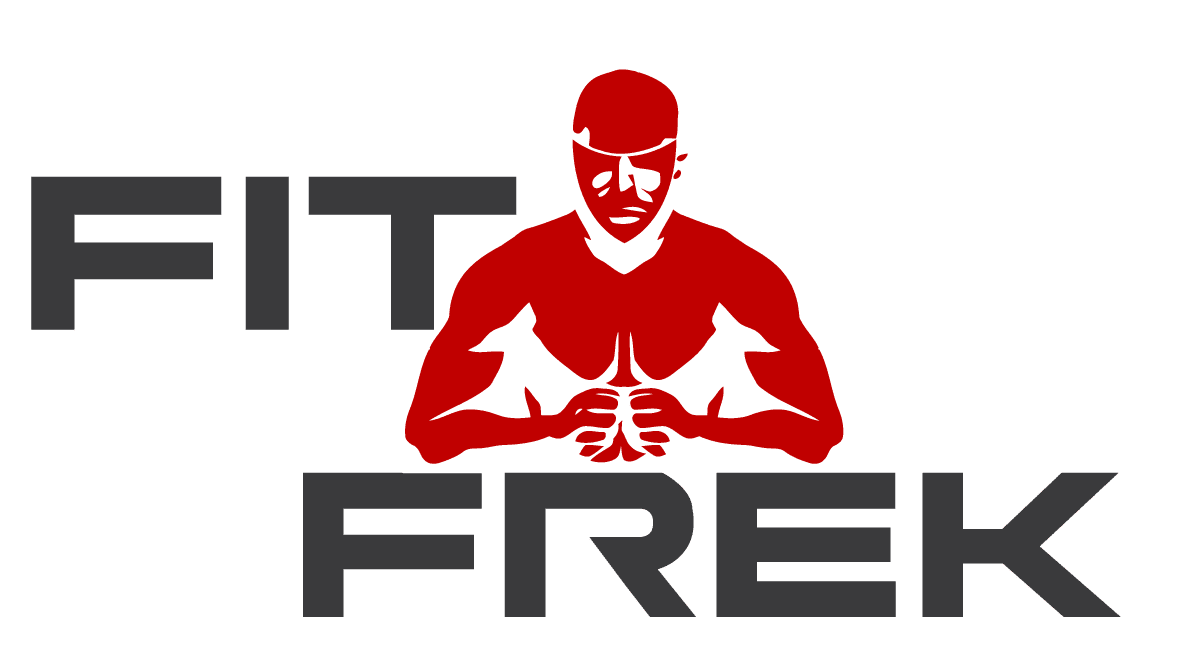 About FitFrek
About FitFrekFitFrek operates as an independent platform, offering comprehensive workouts, programs, routines, guides, and unbiased reviews to accelerate your progress. We pride ourselves on our honesty, delivering straightforward and candid insights. FitFrek does not offer medical advice, diagnosis, or treatment services.